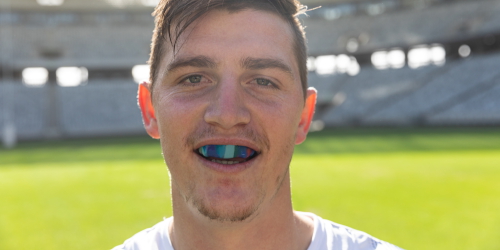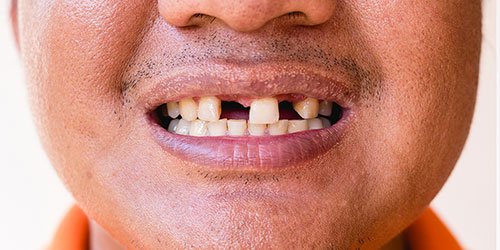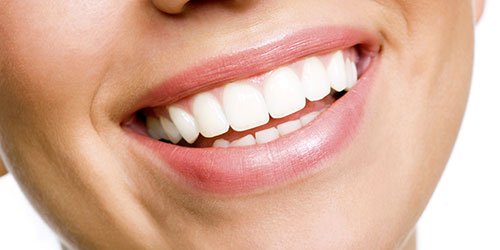What is Dental Implant Rehabilitation?

Implant Rehabilitation is simply the process of saving a dental implant from total failure by discovering the underlying problem causing the malfunction and correcting it before the implant fails and must be surgically removed.
What Are Dental Implants?
Essentially, dental implants are man-made artificial tooth roots that can be used in a variety of ways to replace lost or missing teeth and support fixed or removable dental prostheses. They are typically made from medical-grade titanium, although new materials, such as zirconia (a ceramic), are also gaining popularity.
The modern era of dental implants began with Dr. Per-Ingvar Branemark, an orthopedic surgeon in Sweden, who placed the first root form dental implant in the 1960s. According to Dental Products Report, more than 500,000 dental implants were placed in the U.S. in 2017, and that number is quickly increasing.
What Causes Short-Term Dental Implant Failure?
In spite of the tremendous successes of dental implants, the reality is they can still fail. This has become more apparent due to the huge surge in popularity of dental implant placement.
Short-term failures are mostly caused by a failure of the implant to bond with the bone, a process called “osseointegration.” According to the Academy of Osseointegration, several factors contribute to dental implant failure, including smoking, uncontrolled diabetes, low bone density, or deteriorating bone density due to osteoporosis. Poor oral hygiene and gum disease can also put you at risk for a failed implant.
Other causes of implant failures can be serious changes in one’s health, a change in some medications, and impact injuries, like a blow to the head or mouth. Allergies to a metal (non-ceramic) implant, can result in implant loosening.
Implants fail when those without extensive experience in the field do implant surgery. These include non-trained periodontists and dentists and newly licensed doctors often found in many of the “teeth in a day” implant centers. And sometimes implant surgeons make mistakes.

What Does a Failing Dental Implant Feel Like?
The symptoms of a failing implant may include pain, mobility of the implant fixture (the part of the implant that is submerged in the jawbone), bone loss, bleeding, and the formation of pus. Certain X-ray findings around the implant can also suggest swelling and loosening.
How Successful are Short-Term Implant Failure Treatments?
Luckily, these short-term failures can often be successfully treated by minimally invasive procedures while keeping the implant in place. These procedures include eradicating emerging infections or cysts and administering antibiotics. More aggressive implant rehabilitation can include removing the implant altogether, repairing the surgical site with a bone graft, and allowing it to heal, before attempting to place another implant.
If the bone is able to successfully accept another implant and heal, the rehabilitation is a success.
How Successful are Long-Term Implant Failure Treatments?
Unfortunately, long-term dental implant failure presents an entirely different set of challenges. They can occur after the implant has healed and become fully integrated into the bone, or after an implant has been restored following a prior failure.
The most common long-term failure (and the most difficult to treat) is called peri-implantitis. Peri-implantitis is a chronic infection in the gum and, ultimately, the bone that supports the implant. It may be likened to periodontal disease that affects natural teeth, since both result in the loss of the supporting structure (jawbone) around a tooth root (real or prosthetic). Maintaining dental hygiene is important as periodontitis also puts patients at higher risk of peri-implantitis. Symptoms may include discomfort and pus or bleeding from the gums.

Treatments for peri-implantitis include improvements in-home oral care, more frequent dental cleanings and checkups, laser-assisted implant decontamination, antibiotics, and even surgery to restore the bone.
Other long-term failures can include prosthetic complications, such as broken screws, abutment loosening, and fractured restorations. These can also be associated with loss of function and cosmetic changes. Fortunately, most of these situations are easily corrected by our experienced clinicians.
Do New Implant Technologies Prevent Dental Implant Failure?
Absolutely not. With the advent of newer technologies such as computer-guided implant placement, the fact still remains that implant software cannot override human error. These technologies still have room for errors such as inaccurate planning, radiographic errors, errors during 3D scanning of the patient’s mouth, errors in prepping the guide stent, and improper transfer of information for the prosthetics, all of which can result in suboptimal placement of the implant.
Fortunately, Dental Implant Rehabilitation Can Be Very Successful
Success rates for dental implant rehabilitation done by experienced periodontal experts are very high. Unfortunately, the success rate in treating peri-implantitis is generally lower among less experienced periodontists and other dental professionals. That’s why seeking out an extremely experienced implant expert is critically important if your implant is in danger of failure.

It is also imperative that you maintain good dental hygiene during the rehabilitation healing process and beyond. Remember to brush and floss twice a day and rinse with mouthwash. This will prevent bacteria from building up around the implant site and contributing to implant failure. When flossing, make sure to floss around all implanted and natural teeth, getting into the gums to prevent bacteria buildup.
If you suffer from bruxism (teeth grinding or clenching), make sure to talk to your dentist. The repeated stress can cause damage to your permanent dentures and cause implant failure (especially during the healing process).
The Los Angeles tooth implant specialists at MD Periodontics are able to answer all of your questions about dental prosthetics and implant rehabilitation. Don’t let your peri-implantitis go untreated!
Why trust MD Periodontics to perform your implant rehabilitation?

- Experience: Drs. Moshrefi and Daneshmand have almost 40 years of combined experience in periodontics, dental implant surgery, and restorative dentistry. They have served as faculty at USC School of Dentistry and offer the latest technology in implant dentistry available in the US.
- Personal Attention: At MD Periodontics, we know that every patient is different. That is why our experienced implant specialists take the time to fully understand your dental needs.
After performing a comprehensive examination that includes digital x-rays and 3D imaging to capture the most precise imaging available, our implant specialists will carefully explain available treatment options for creating a not only functional but extraordinarily natural-looking mouth. - Affordable Dental Implants: In order to make the cost of dental implants accessible, we offer financing options to facilitate payments. Because when it comes to preserving your oral health, some interventions can’t be delayed.
To schedule a consultation, click here or call us at (855) 245-1100. Your smile will thank you!
At MD Periodontics, we take our patients’ safety seriously. Our facility’s Covid-19 patient safety procedures exceed all CDC recommendations. Masks are required in our institutes at all times.
We are conveniently located to patients throughout Southern California and the Los Angeles area. Our Beverly Hills office is conveniently located near West Los Angeles, Culver City, West Hollywood, Downtown Los Angeles, Marina del Rey, Pacific Palisades, Malibu, Manhattan Beach, Sherman Oaks, and Encino.
 (855) 245-1100
(855) 245-1100 Implant Rehabilitation
Implant Rehabilitation
 or call us at
or call us at 





































